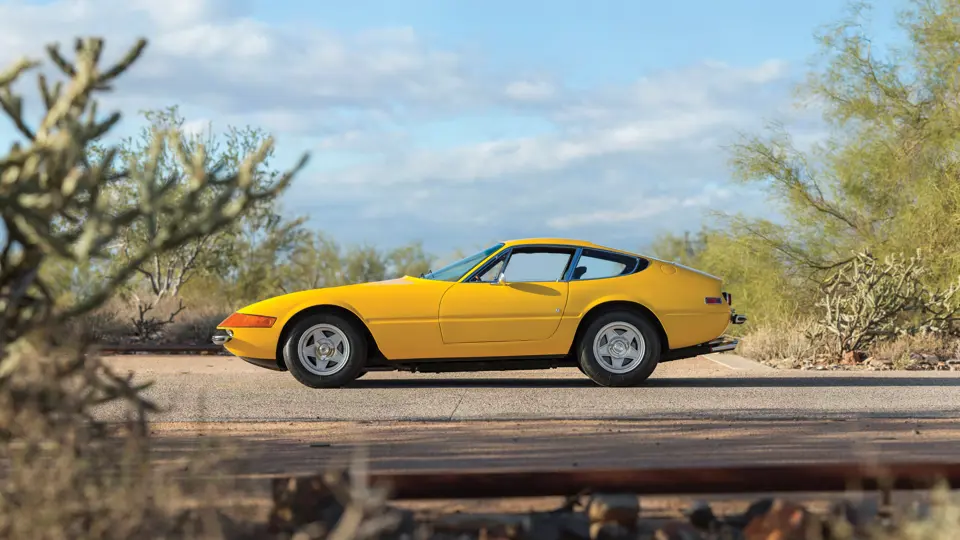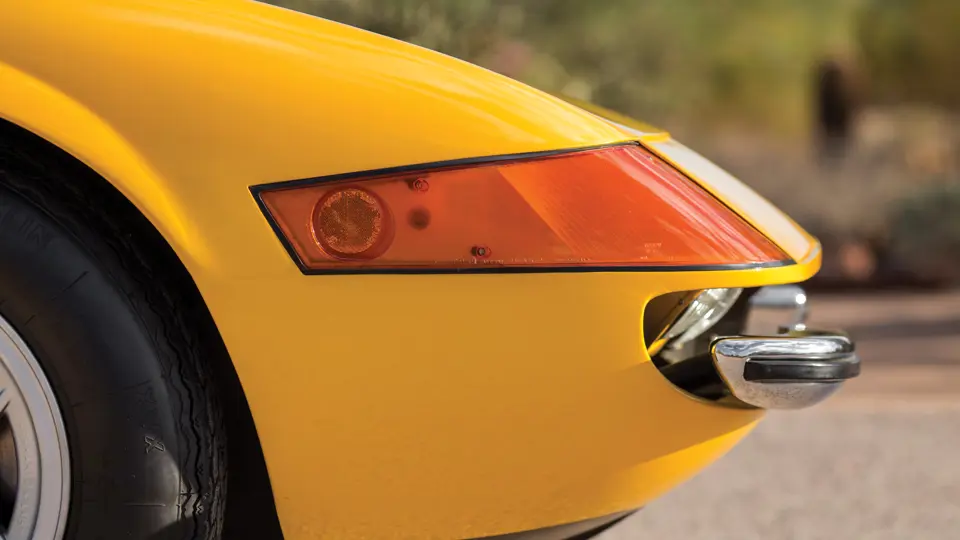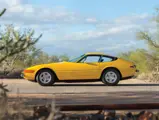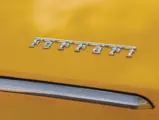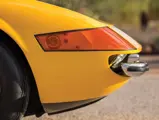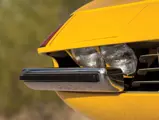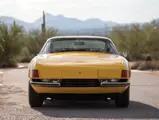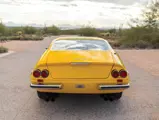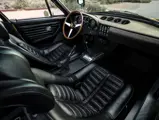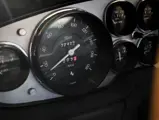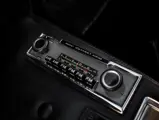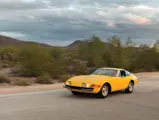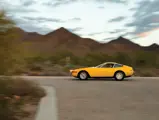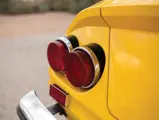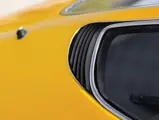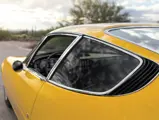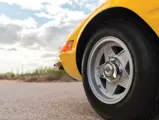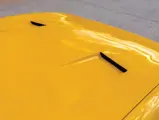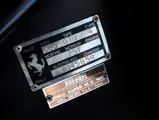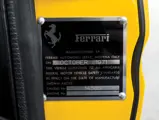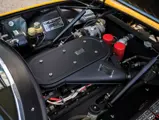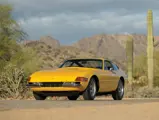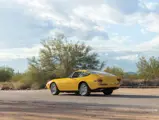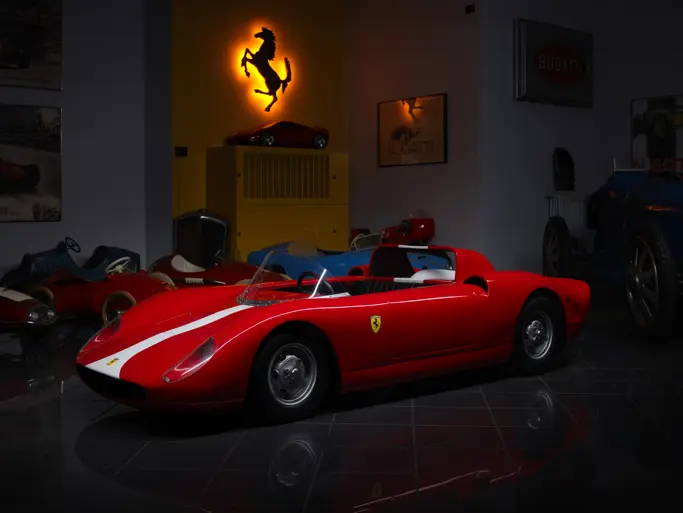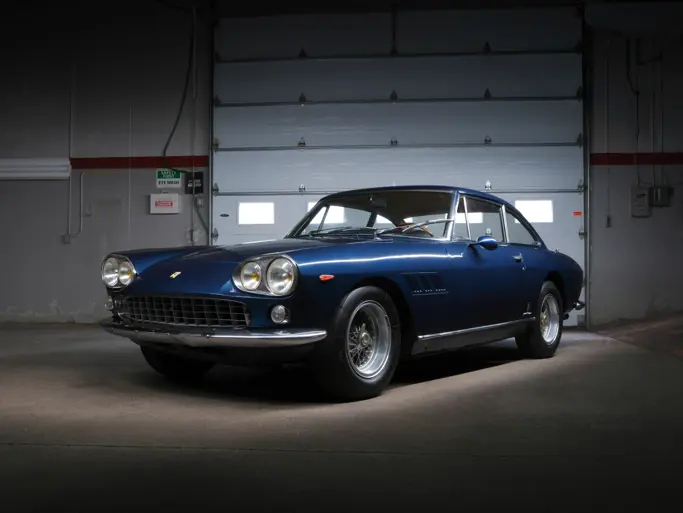352 bhp, 4,390 cc DOHC V-12 engine with six Weber carburetors, five-speed manual transmission, independent front and rear suspension with unequal-length wishbones and coil springs over telescopic shock absorbers with anti-roll bars, and four-wheel hydraulic disc brakes. Wheelbase: 94.5 in.
The 365 GTB/4 Daytona occupies the important position in Ferrari’s lineage as the last of the classic two-seater front-engined V-12 gran tourers. Increasing competition, particularly from Lamborghini, pressured innovation and subsequent V-12s were mid-engined until the 550 Maranello in 1996.
Unveiled at the Paris Auto Salon in the autumn of 1968, the 365 GTB/4 quickly became known unofficially as the “Daytona” by the media in honor of the company’s podium sweep of the 24-hour race just a year prior. The styling by Pininfarina was an evolution of previous GT Ferraris with an expansive hood and short rear deck, but featured a more modern, angular wedge design. Construction was completed by Ferrari’s trusted partner Scaglietti. The steel bodies with aluminum door, bonnet, and boot lid were mounted on a 94.5-inch wheelbase chassis utilizing large section oval main tubes, cross bracing, and sub structures. Weight distribution was a near perfect 52/48, thanks to the rear transaxle mounted five-speed gearbox and an aluminum engine block mounted as far back as possible. Fully independent suspension with wishbones and coil springs allowed for supreme road-holding abilities, and four-wheel disc brakes provide abundant stopping power.
With their sights squarely set on the Lamborghini Miura, Ferrari crafted an immensely impressive rival. The Tipo 251 Colombo V-12 featured four chain-driven camshafts, six Weber twin-choke carburetors, and a dry sump oil system, allowing for peak output of 352 horsepower at 7,500 rpm. Third-party testing by Autocar in 1971 confirmed a top speed of 174 mph, cementing the all-mighty title of “fastest production car in the world.” Further figures display the serious level of performance on offer: a 13.8-second quarter mile at 107.5 mph, a 5.5 second 0–60 mph time, and a 0–100 of time of 12.5 seconds. All of this was available with little compromise, as the 365 GTB/4 included the highest range of creature comforts offered by Ferrari at the time.
The Daytona offered here was completed by the factory on 13 October 1971 and delivered to Luigi Chinetti Motors of Greenwich, Connecticut, in late 1971. As a U.S.-specification car, it lacks the Plexiglas nose found on early European models, as U.S. regulations required the change to retractable headlights. Additional changes for the U.S. market include a reduced compression ratio to 8.8:1, revised exhaust, and additional bracing within the doors. Originally finished in Rosso Ferrari (20-R-187) over a beige leather (VM 3104) interior, the Daytona was also optioned with all-important and rare factory air conditioning.
In 1976 the Ferrari was offered for sale by Jim Oppenheimer, having been repainted and fitted with black and tan seats. The Daytona was later acquired by Bill Badurski in February 1977. Several years later, in 1980, the Daytona was offered by Jake Weaver of Branson, Missouri, and was acquired by Bruce Vineyard of Conyers, Georgia. Vineyard would maintain and show the car for several years, including presenting the Daytona at the 21st Ferrari Club of America Annual Meeting at Lake Lanier Island, Georgia. In September 1984, the car was sold to Ed Henning of Charleston, South Carolina. Sometime thereafter, believed to be in the late 1980s, it was repainted in Fly Yellow and trimmed with a black interior during a comprehensive restoration to its current livery. The Daytona was then sold from his estate in 2004. It was later acquired by the previous owner in 2013 and several years thereafter by the current owner, who has continued to maintain the Ferrari to exceptional standards. Most importantly, it was certified by Ferrari Classiche in 2013, attesting to the Daytona’s overall authenticity.
The 365 GTB/4 is undoubtedly one of the most iconic Ferraris of all time, and it is prized just as much for its driving dynamics and performance as it is for its breathtaking looks. It marked the end of the line for Ferrari’s two-seater, front-engined V-12 grand tourers until the introduction of the 550 Maranello nearly a quarter-century later. The Daytona offered here is a wonderful driving example, and it would be a brilliant addition to the garage of any tifosi.
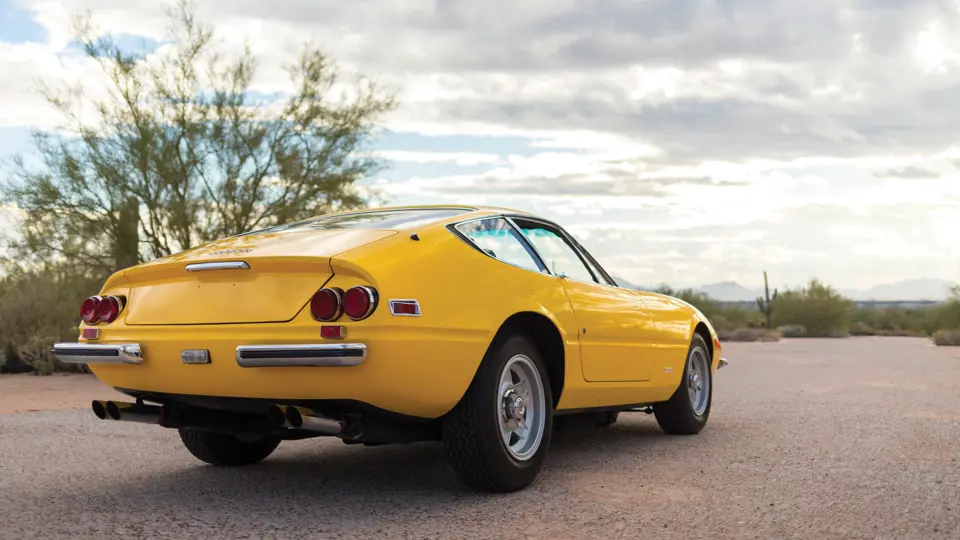
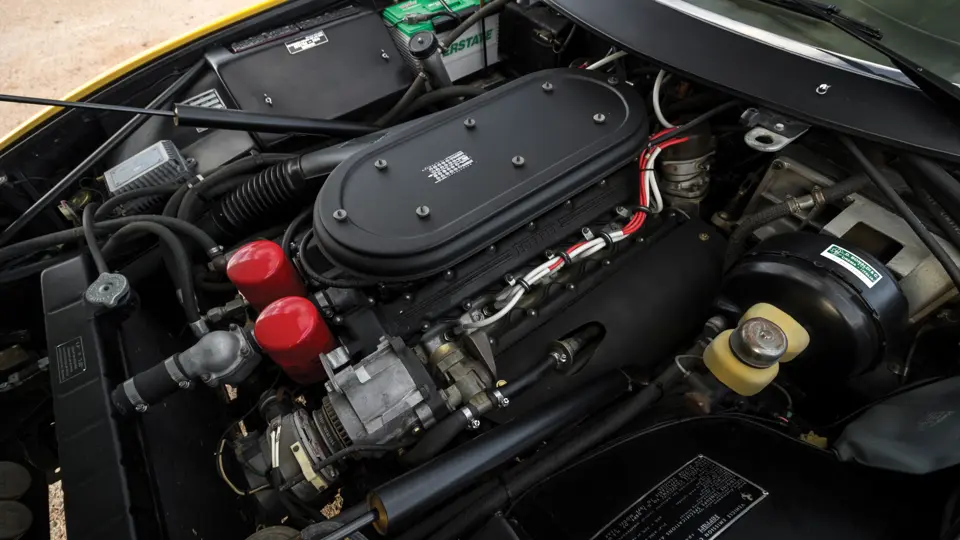
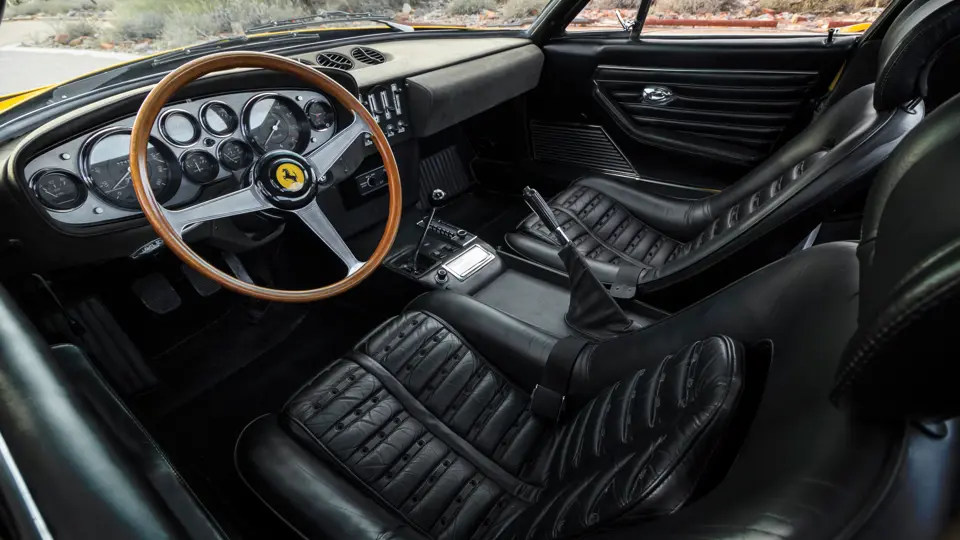

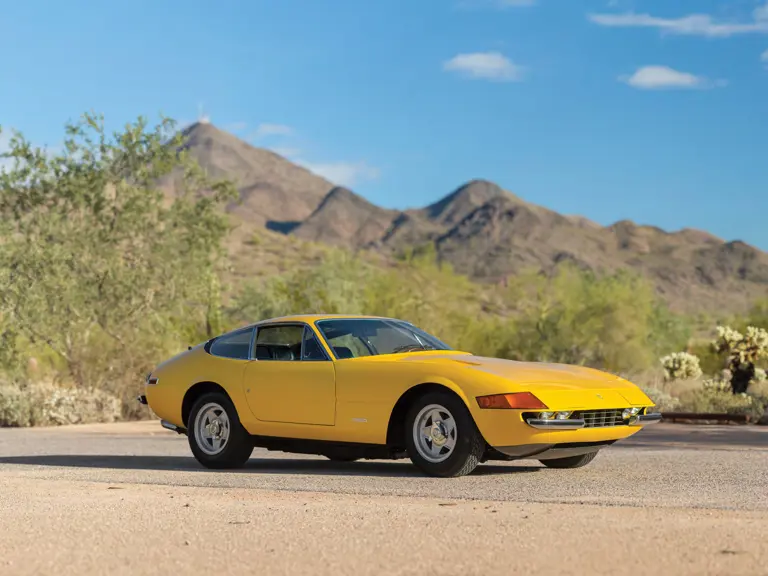
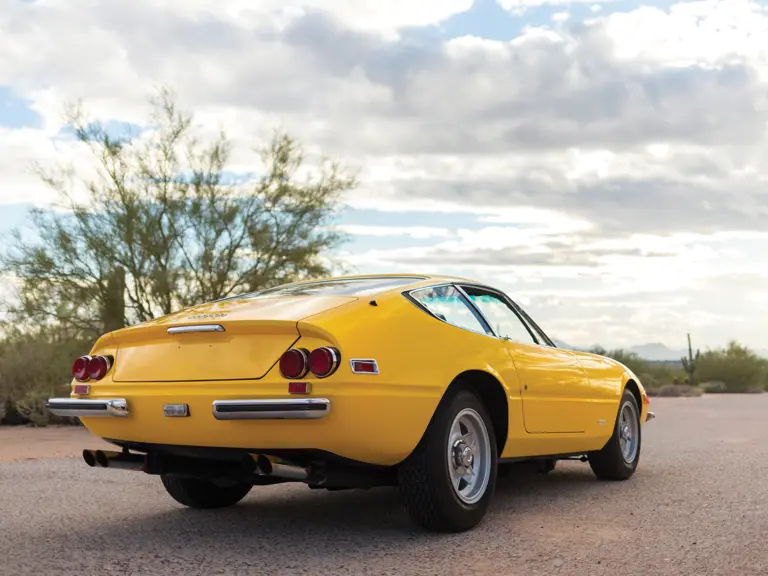

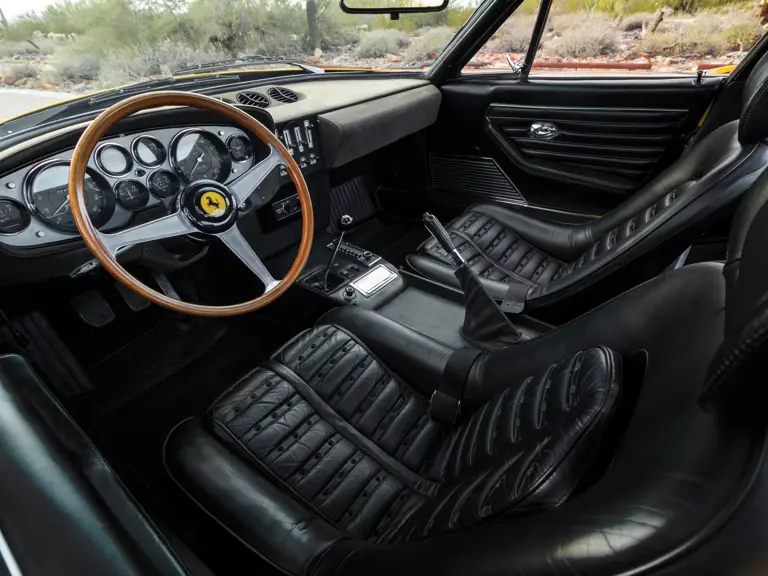
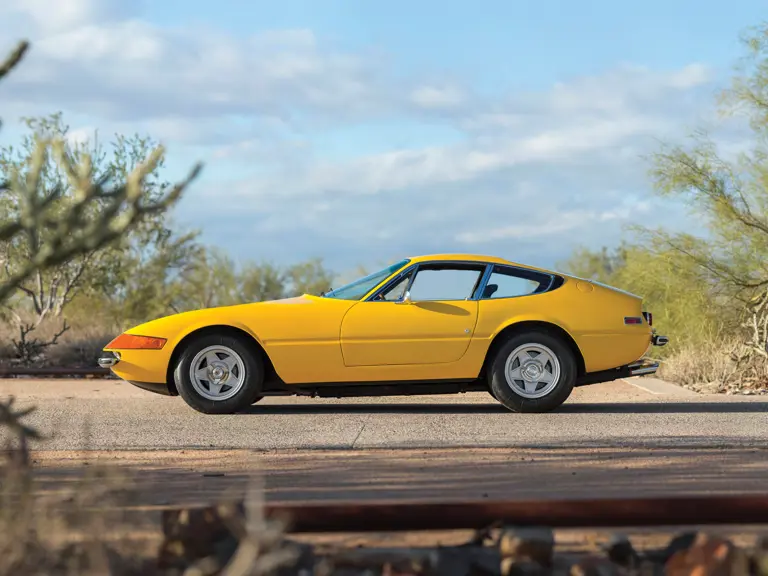
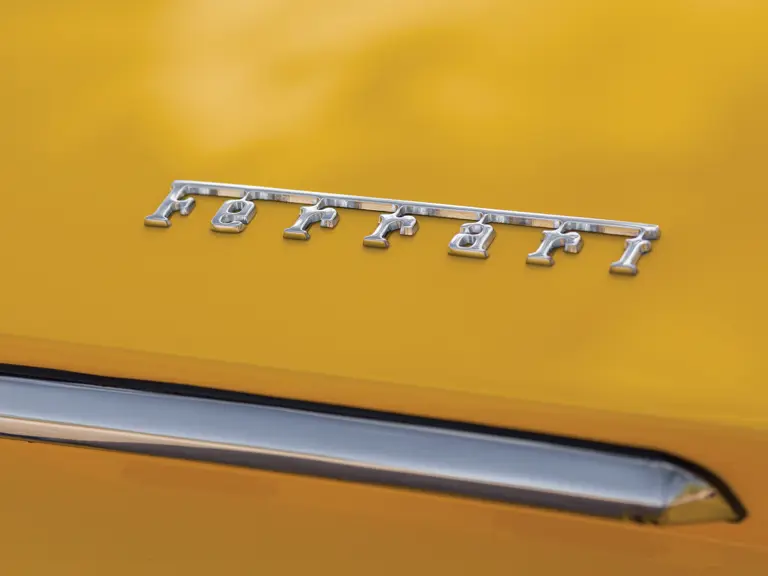

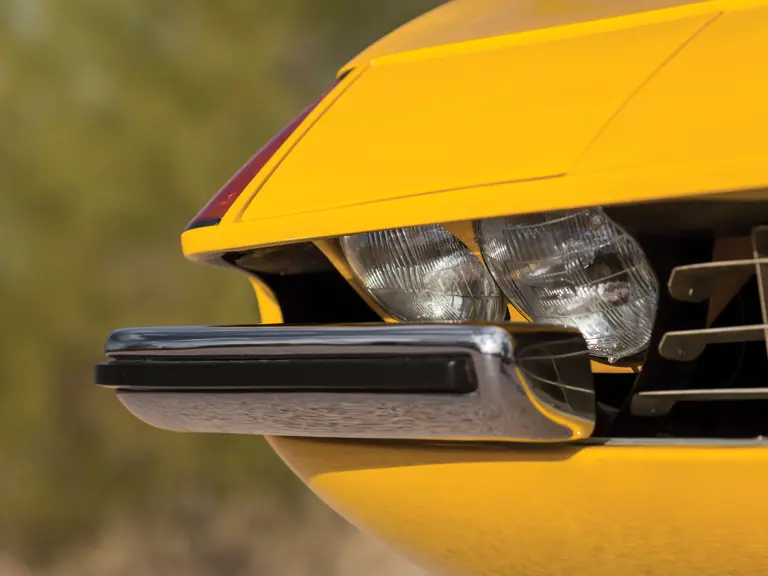
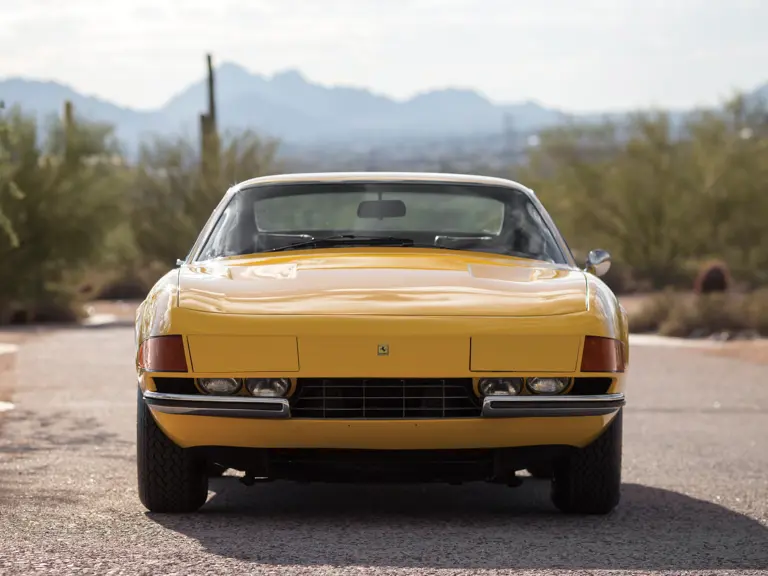
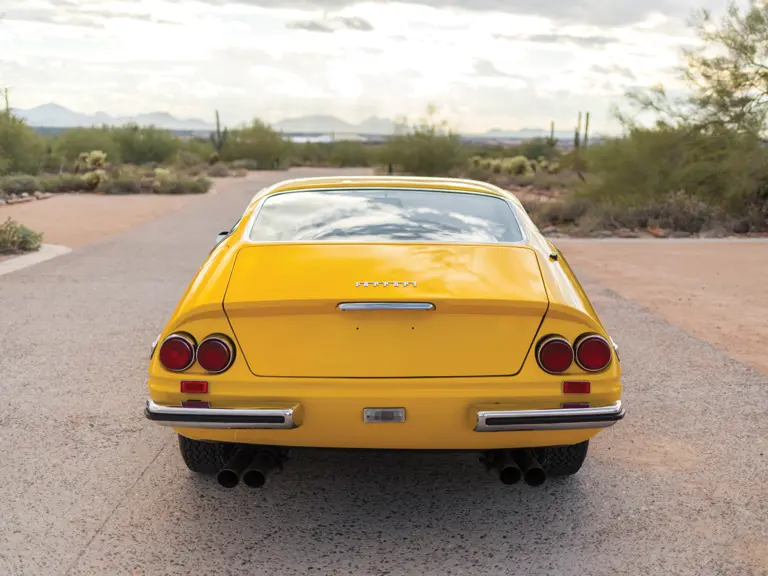
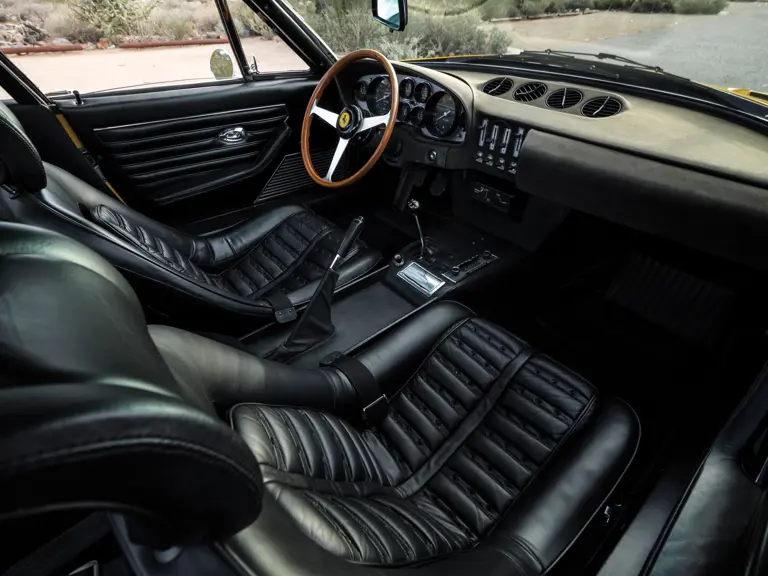
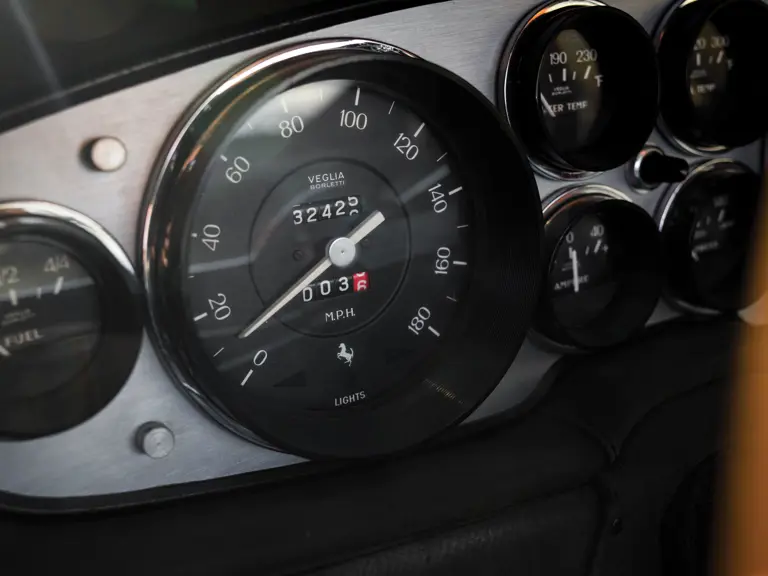

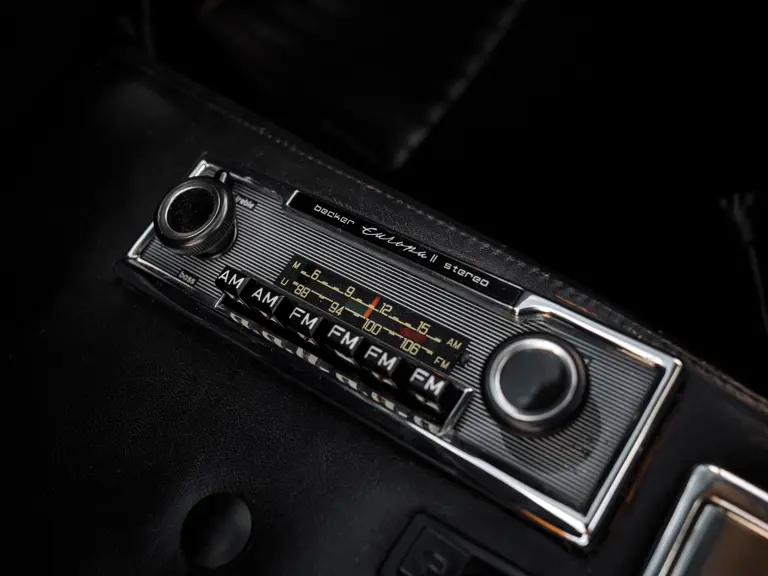
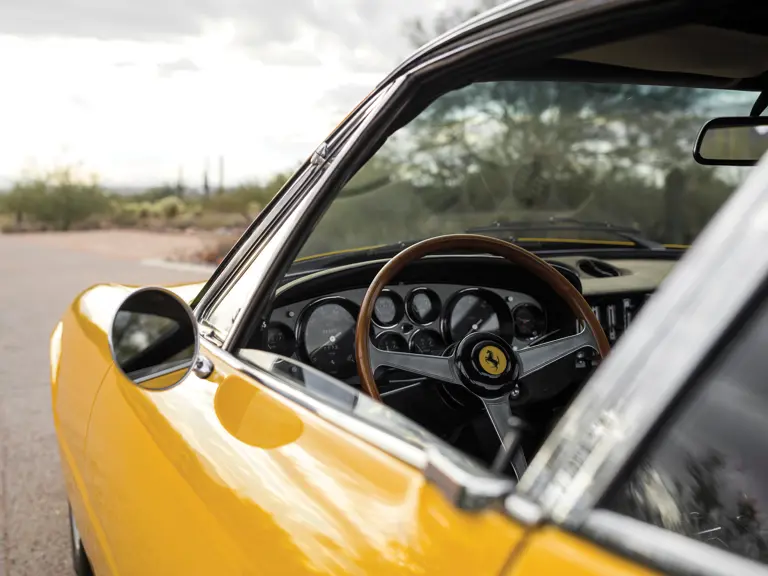
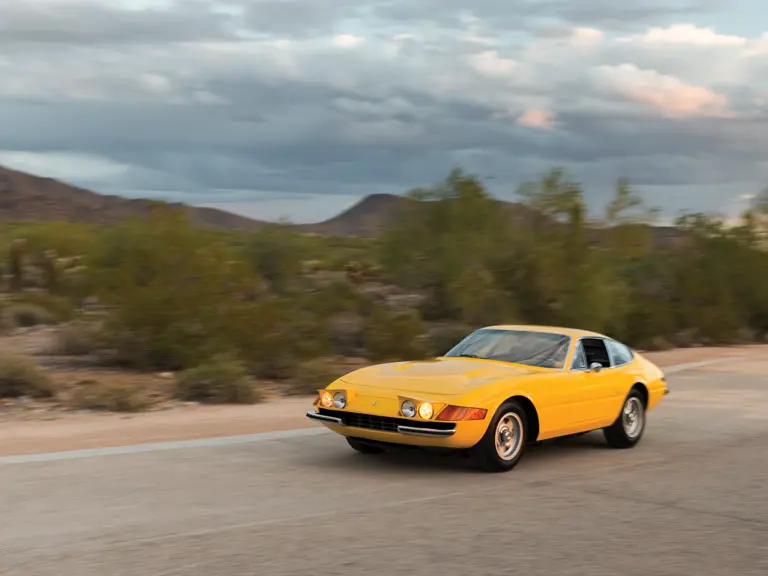
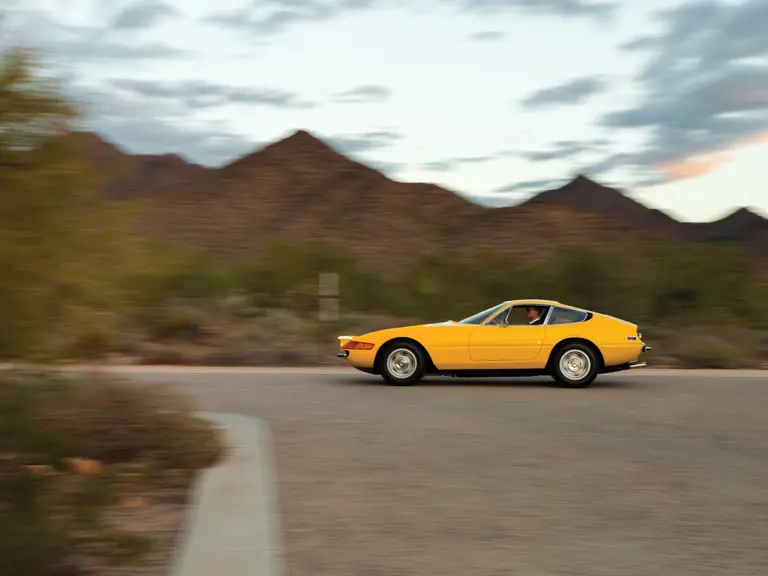

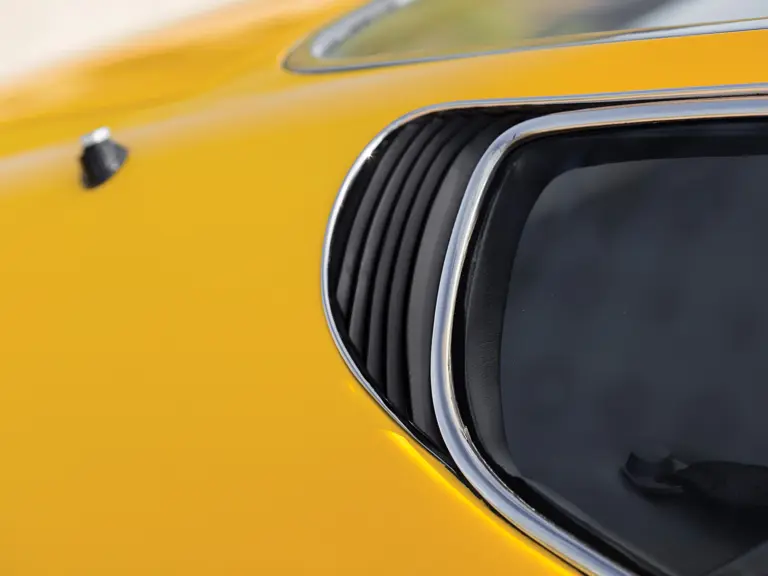
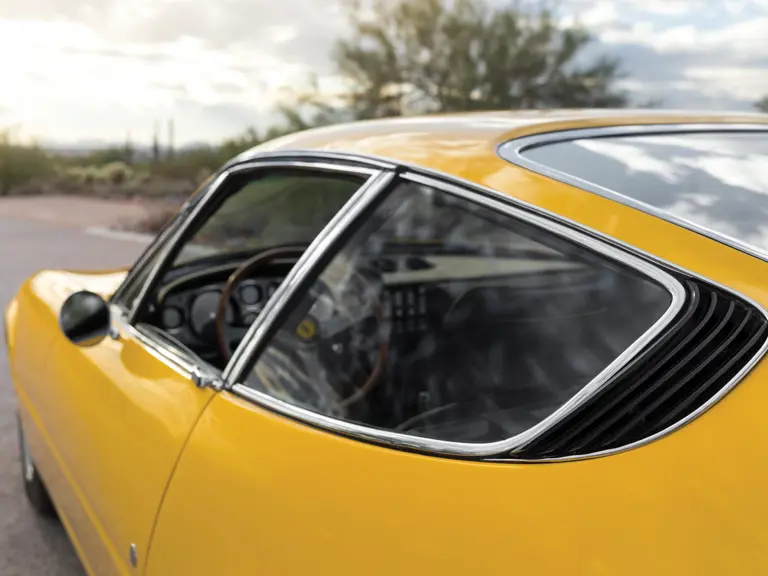
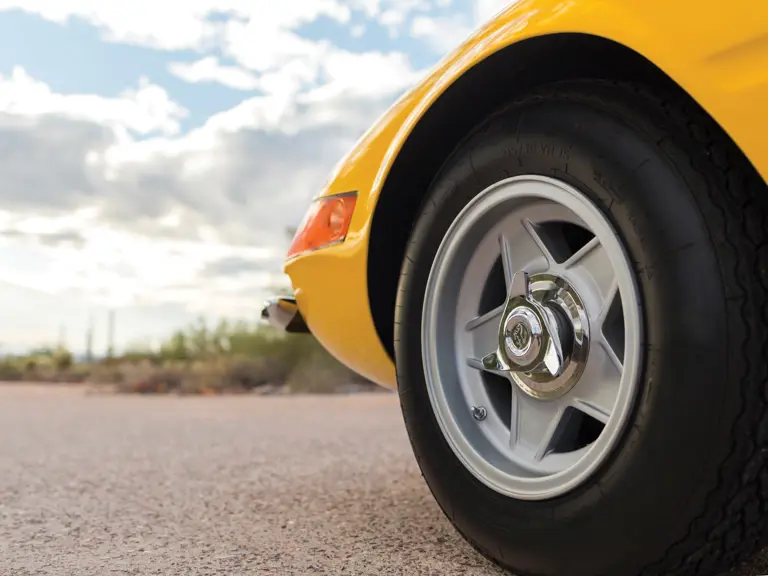
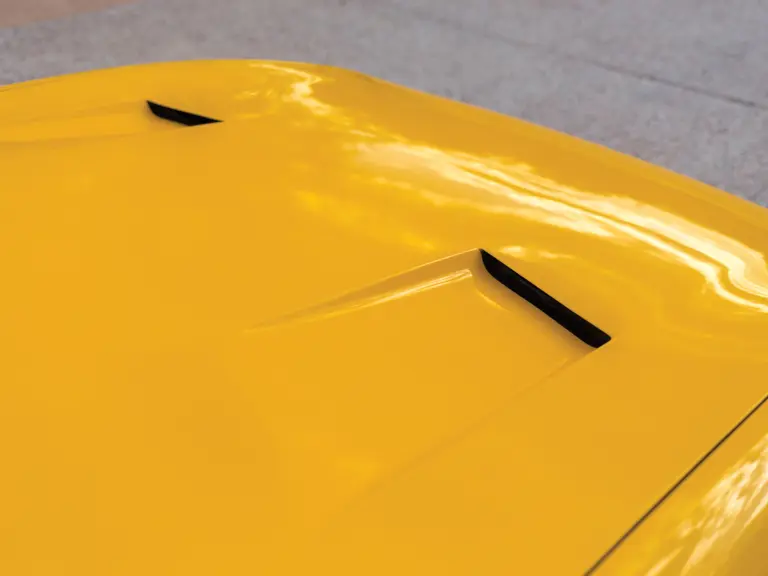
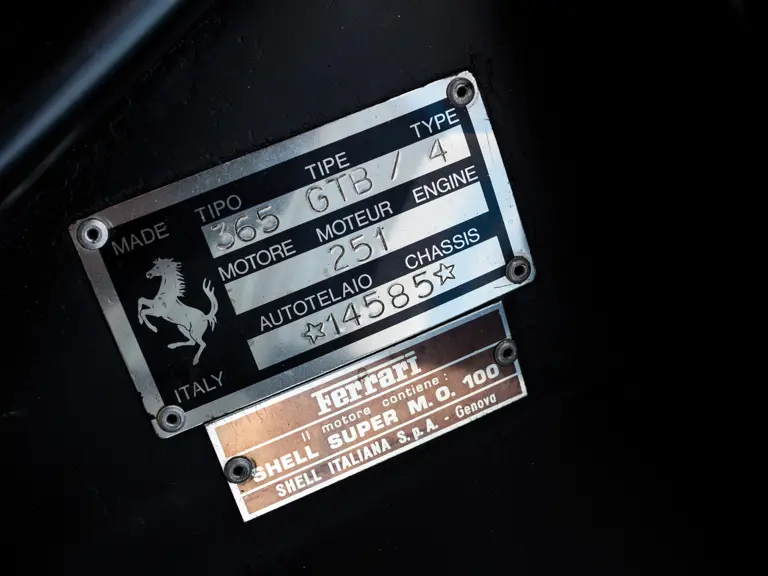
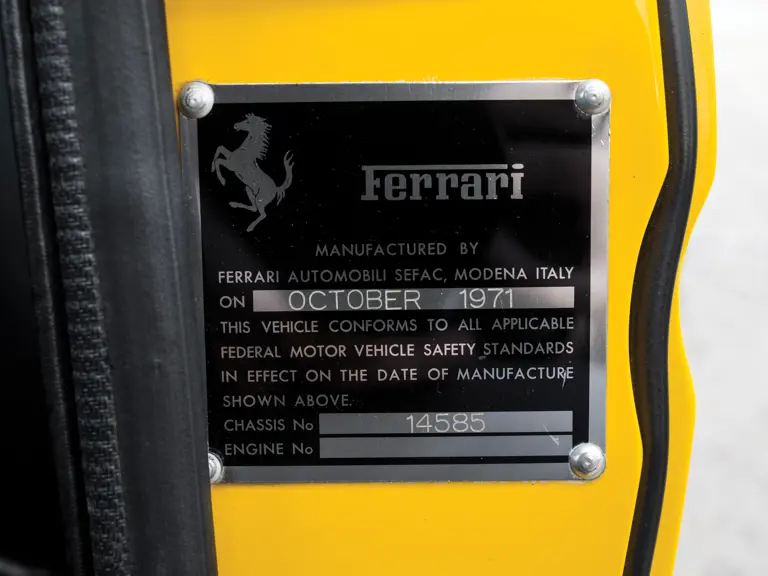


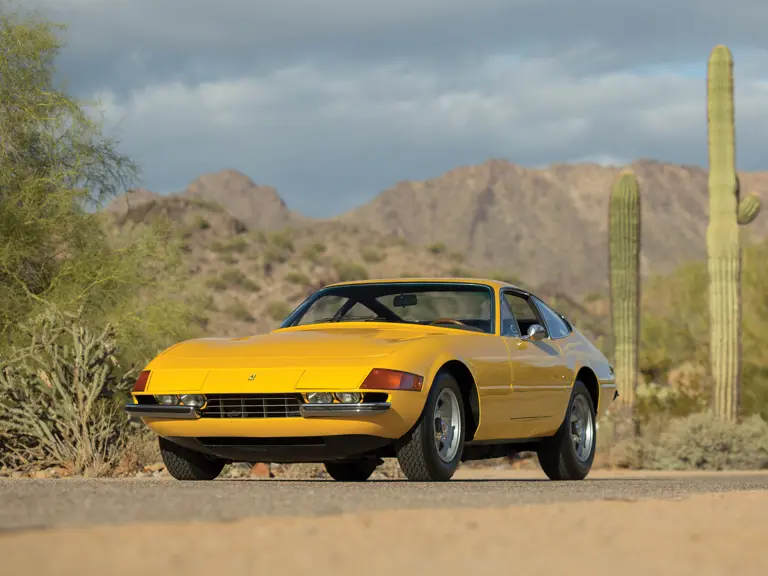
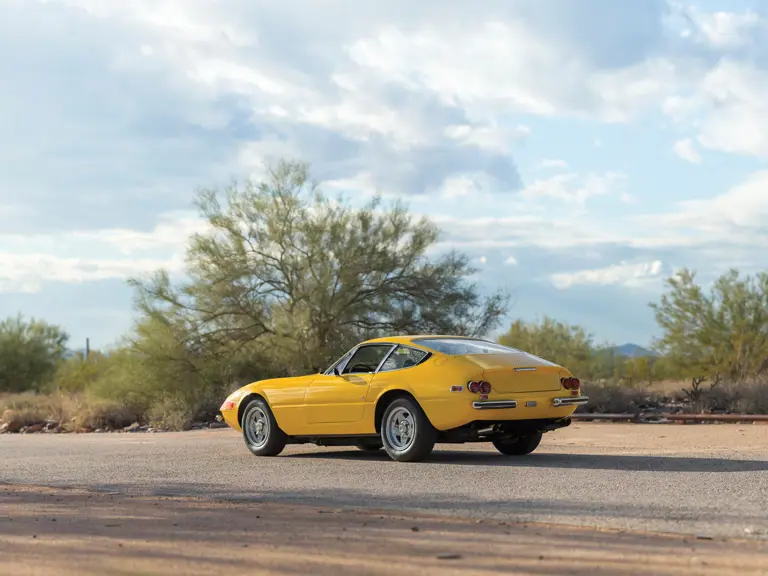
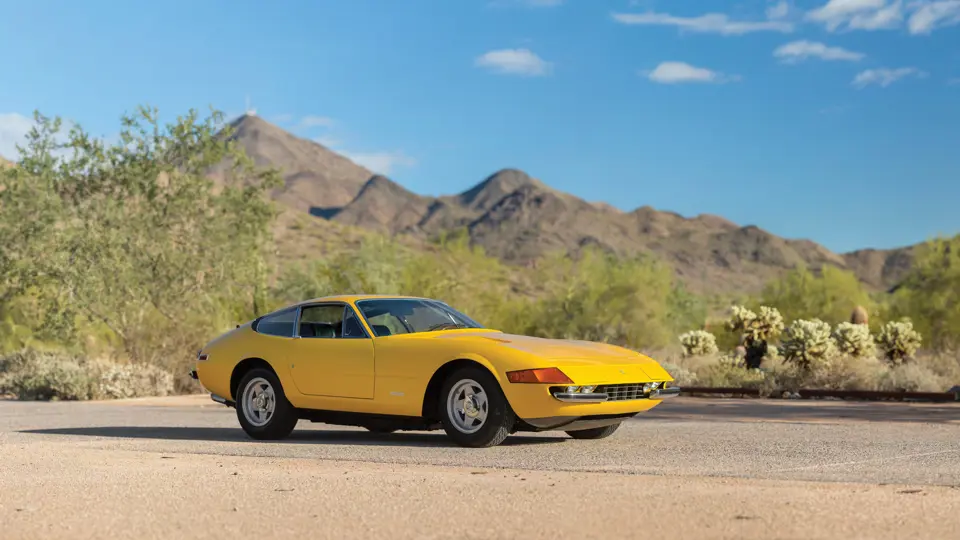
 | Amelia Island, Florida
| Amelia Island, Florida
